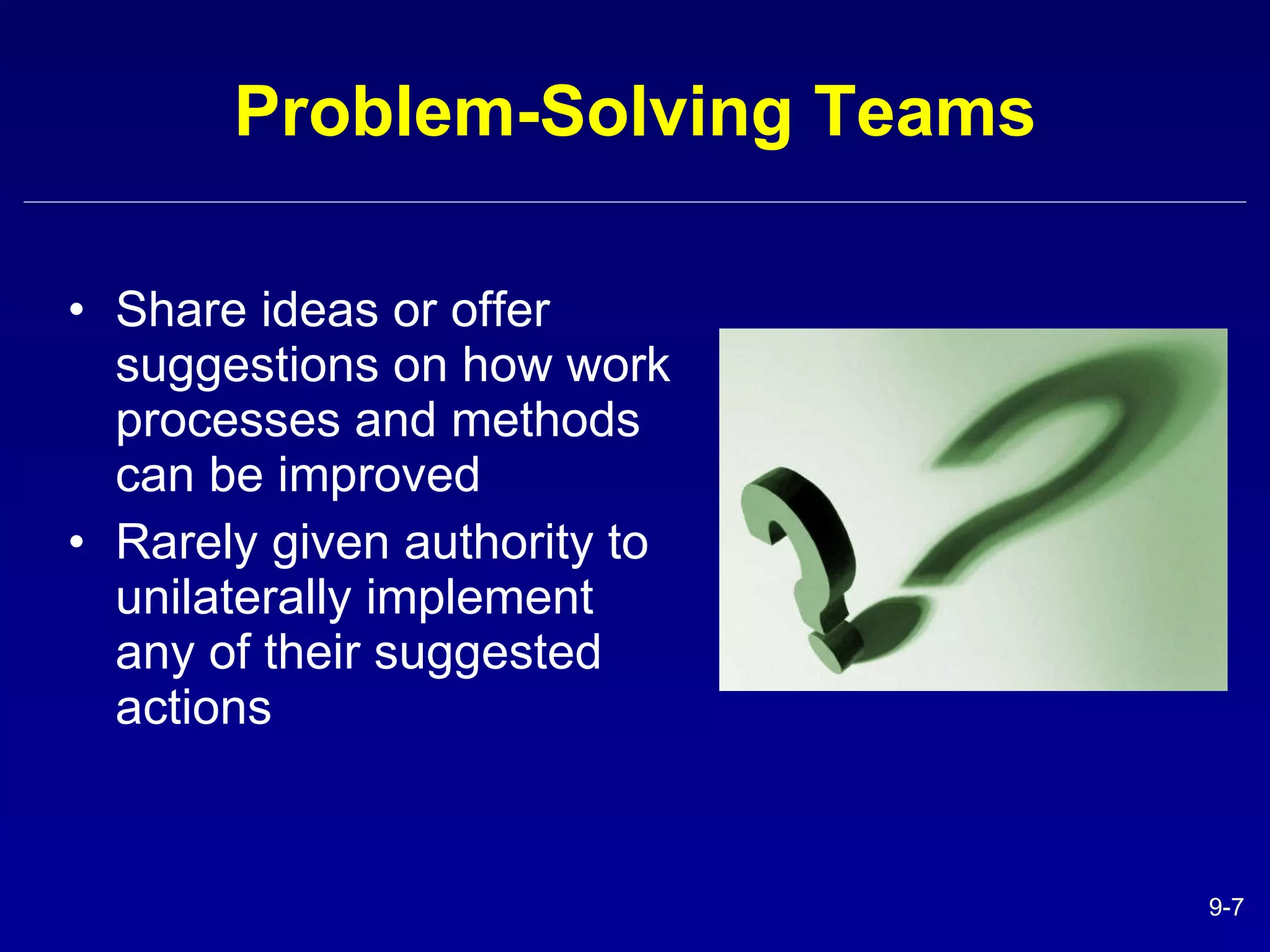Teams have become popular in organizations as they can outperform individuals on complex tasks, better utilize employee talents, and increase flexibility and motivation. A work team generates synergy through coordinated effort to perform better than individuals. There are four main types of teams: problem-solving, self-managed, cross-functional, and virtual teams. Key components of effective teams include having the right context, composition, work design, and processes. Managers can create team players through selection, training, and rewards that encourage cooperation over competition. Teams are preferred over individuals when work requires multiple skills and interdependence between members.



















